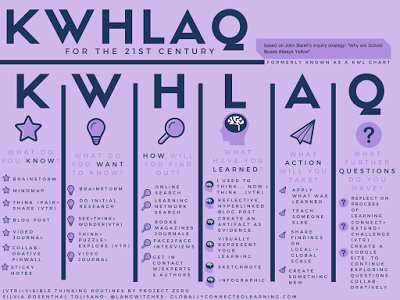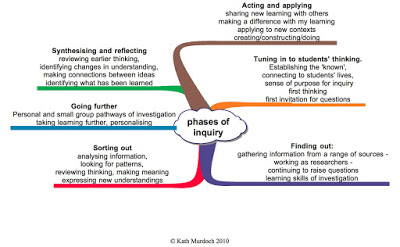On Thursday, February 27th, Prime Minister of Japan Shinzo Abe announces that schools should close for two weeks to prevent further spread of COVID-19, novel coronavirus.
My school decided the next afternoon to close for two weeks and introduced a distance learning plan including two days for faculty to gain proficiency with our learning management system and begin planning and creating online content.
Help on the web
There has been a deluge of posts packed with suggestions and recommendations. One of the best is Distance Learning Under Pressure: Getting Your School Ready in a Short Time, which includes many useful suggestions which may or may not work in any given situation. It’s at the top of my list, though, because it places empathy at the top of that priority list. Yoshiko Iwai’s article in Scientific American, Online Learning During the COVID-19 Pandemic is also helpful because of its practical advice based on experience.
What’s working: Flexible guidelines
A distance learning plan must be an agreed set of principles and expectations, but not a schedule. Everyone needs to react to a public health emergency in different ways, and school-at-home cannot be the center of our lives in a crisis. One size cannot fit all. The stress of the situation cannot be overstated, and the plan must set all community members’ health – physical, mental, and emotional – as the top priority.
Some students will not be at home. They may stay with relatives who may or may not have broadband internet access. Some may be with a parent at their workplace, some may be home unsupervised. A distance learning plan must take this into consideration by:
- Operating asynchronously: Students should be allowed to work at their own pace and submit assignments when they can, not according to a strict schedule.
- Providing easy access to content: Videos available as small files for streaming, and content also available as text for minimal data consumption.
- Continuing routine tasks from the classroom, although teachers may or may not be able to follow-up. For example, reading for pleasure and independent writing.
This applies mostly to students, but also to teachers: I am teaching from home at the same time I’m helping my two children complete their online learning. Many parents will be be working from home in this way and won’t be able to maintain their job and the full responsibilities of school.
Teachers will be developing entirely new sets of capacities all at once, essentially and instantly starting a new career as an e-learning professional. Everything needs to be scaled down for ease and flexibility of use.
What’s not working: Recreating school at home
Attempting to recreate school at home is literally impossible. It is achievable by degrees depending on the level of embedded technology normally in use in the classroom and the availability of adult support for students at home. What works at school might not even work at home, anyway, so we need to think more creatively.
My younger child, a kindergarten student, struggled to maintain focus through the full-day of activities his teacher was providing online. In school, the mutual support among the children helps him to maintain attention and routines. I asked if she could provide guidance each day about which tasks were required or optional. This helped us to prioritize at home, and seemed to help her feel less pressure to fill the children’s schedule. The required assignments include lesson videos for new content, while the optional tasks are less formal and can be reused each day.
What’s working: Video conferencing
The most indispensable tool for me has been Microsoft Teams. It is the hub of our online communication and has lessened the friction in transitioning to distance learning. Our first reading group session went smoothly for most groups, particularly for students who were already actively utilizing the tools in the Office 365 suite.

Another service that is ideally suited to the situation in Flipgrid. I believe that it has helped soothe the loneliness that students will inevitably feel when learning in isolation. It has facilitated the ‘social’ in social constructivism at a distance and I look forward to exploring its potential further.
What’s working: Continuing routines
Before the emergency closure, my class had several ongoing routines that students completed independently and were submitted, or could be submitted, digitally. One of these, a Weekly Sharing task, has continued totally unchanged. Students write a blogpost on Kidblog, record a video on Flipgrid, handwrite a journal entry and upload a photograph, or simply type their sharing in a distributed OneNote page that each student uses to document their work, usually by copying and pasting a link to their blog post or video.
This routine has continued, and even flourished, as students have more time and access to the technology they need to create thoughtful pieces. Another tool that we can continue to use with minimal disruption is Quizizz. My students enjoy practicing for quizzes for homework, and then taking the quiz live is a synchronous event that helps us feel more connected.
What’s not working: Sparse tech in school
The majority of students in my class are participating in distance learning using tablet computers, mostly of the iOS variety. Our school owns no tablet computers of any kind, which means the students are using technology at home that they have never used in the classroom. In addition, we have twenty-four notebook computers on a cart shared between four classes – one-hundred students. That’s assuming they are all functioning properly, which they never are.
The elementary school is generally discouraged from embedding technology too deeply, and that approach is coming back to bite us now. Many students who skate by in class without learning to use the technology tools we do utilize are now lost and require help that we can’t provide remotely.
If you want your class or school to be disaster distance learning proof, invest in the technology and make it an essential part of how, where, and when the children learn.
What’s working: Modeling
The best advice for a school leader is to use the distance learning tools you expect teachers to use to teach them how to use them. It would even alleviate the need for teachers to come to school during the closure for ‘training’. Regrettably, the administrative and IT leadership at my school did not do this.
If our IT department had developed online mini-courses about all of the tools available to us, it would be much quicker to get teachers onboard when it became necessary to use those tools. If this were an ongoing process, embedded in our school culture, the transition could have been seamless.
As it is, all of the teachers have struggled to overcome multiple steep learning curves in a short period of time. We have benefited from browsing each others’ pages to glean ideas, and sharing tips on a special Teams channel. It’s a testament to their professionalism, but the resulting added stress and confusion could have been avoided by investing in technology and cultivating a more tech-savvy and capable staff.
What’s not working: Ignoring contract hours
Emergency school closure is going to affect work schedules. It’s unavoidable and a professional must be aware of the need for greater-than-usual flexibility, particularly when it concerns students. I have no complaints about the stream of emails and query messages from 6:30 in the morning to 6:30 at night.
However, school administration doesn’t need special consideration. During the past two weekends, I have been emailed on Sunday. This is typical, so I simply don’t check school email until Monday morning. During this crisis, though, out of concern for students’ needs, I check more frequently. To make it worse, these emails contain requests for tasks to be done in preparation for Monday. That is unacceptable.
If something is that urgent, it should have been addressed on Friday morning. Knowing that teachers are more ‘plugged in’ means that administrators need to be more careful about demanding attention and action outside of contracted working hours.
I have also come to terms with the fact that, while I am working as much as – if not more than usual because I am a homeroom teacher, many support staff and specialist teachers have very little or nothing to do during the closure. It’s not a problem between me and my co-workers though. It’s between them and the administration. It doesn’t do any good for morale, though, when some are working hard all week and others are enjoying a vacation.
What’s working: Audio recording
Audio recording has been a source of quiet salvation in the face of problems such as camera shyness, technological glitches, low bandwidth internet, and more. A recorded read aloud has been a great success, as well as voice recorded assignments using OneNote in place of written work to introduce variety and practice speaking.
Conclusion
At this moment, I feel as disoriented as my students must feel. Teachers have been called in to school tomorrow to reflect and prepare another week of distance learning. Meeting with my grade-level team and sharing stories with colleagues will certainly help to broaden my perspective.
If you are teaching remotely, please comment here or leave a link to your own posts about it. The more we stay connected and share our experiences, the more everyone can make the most of this challenging situation.

















